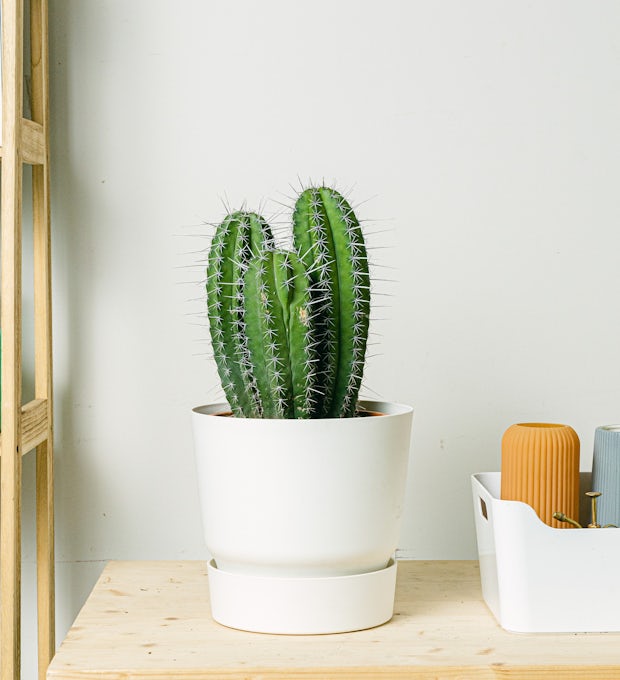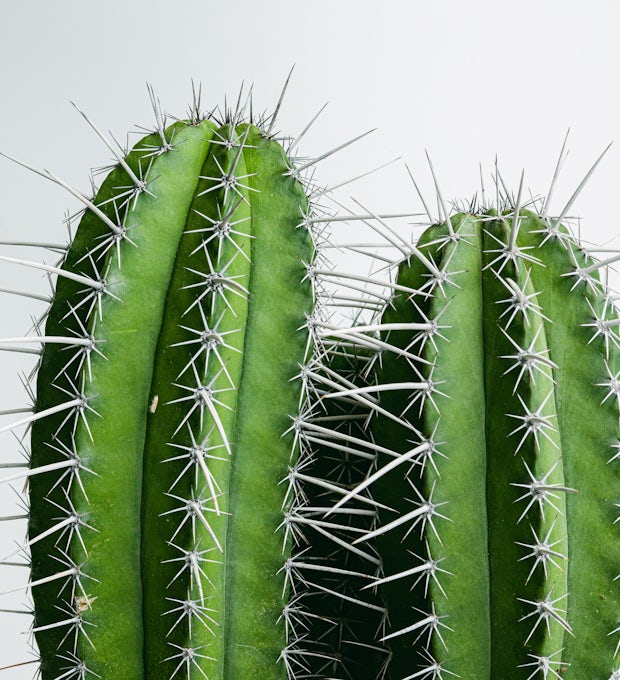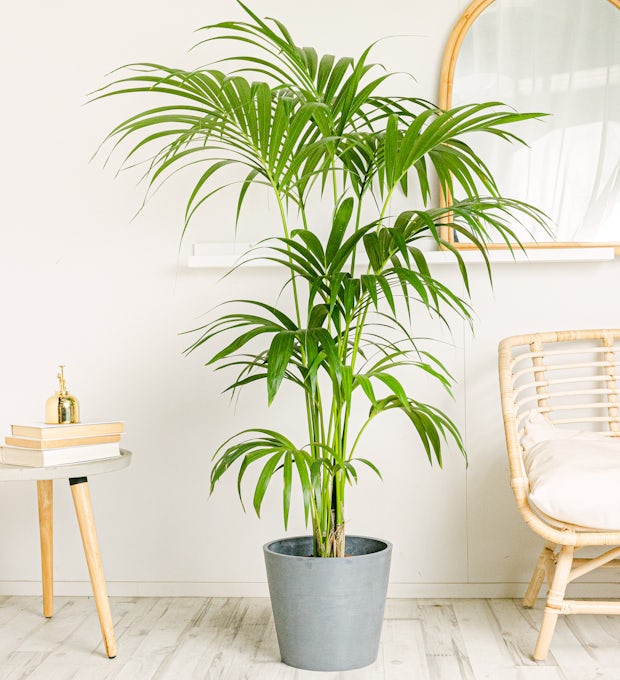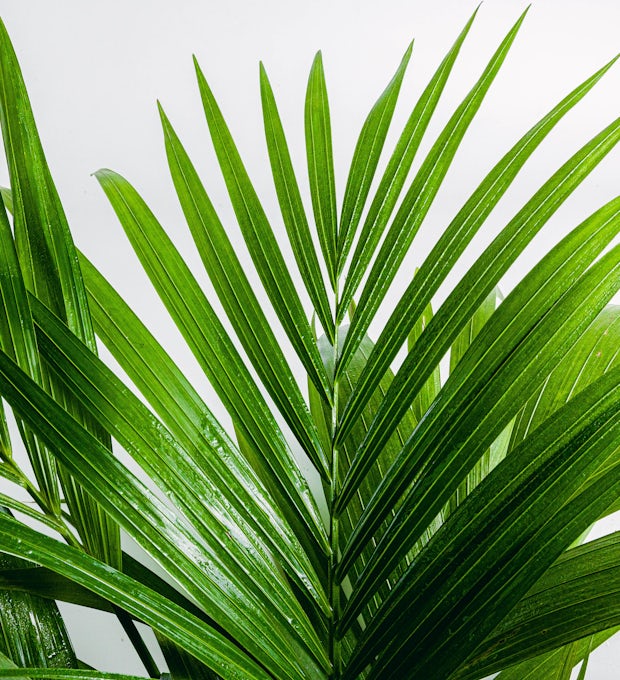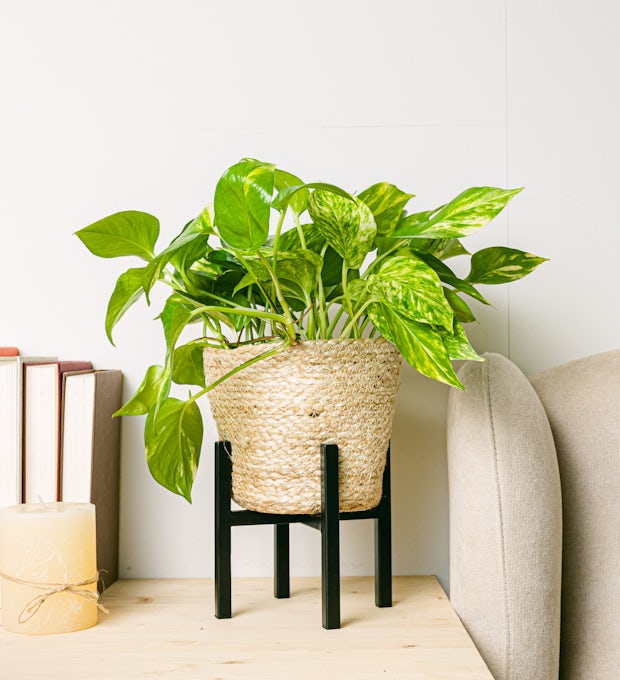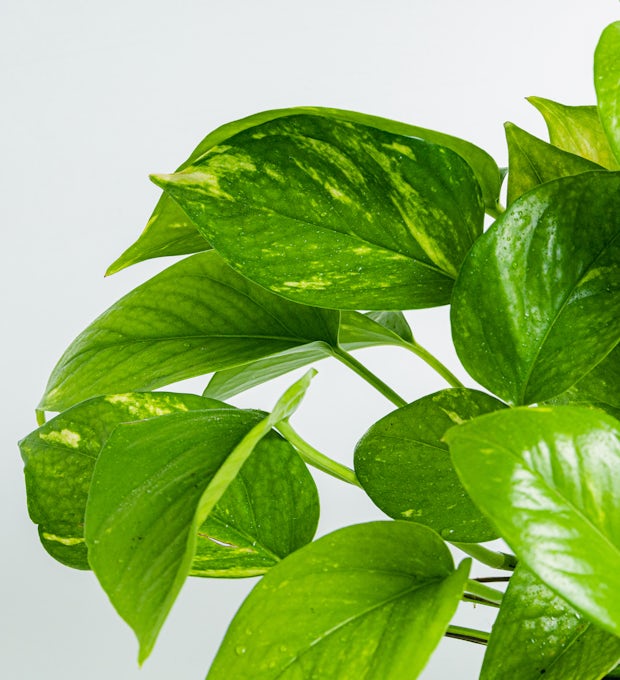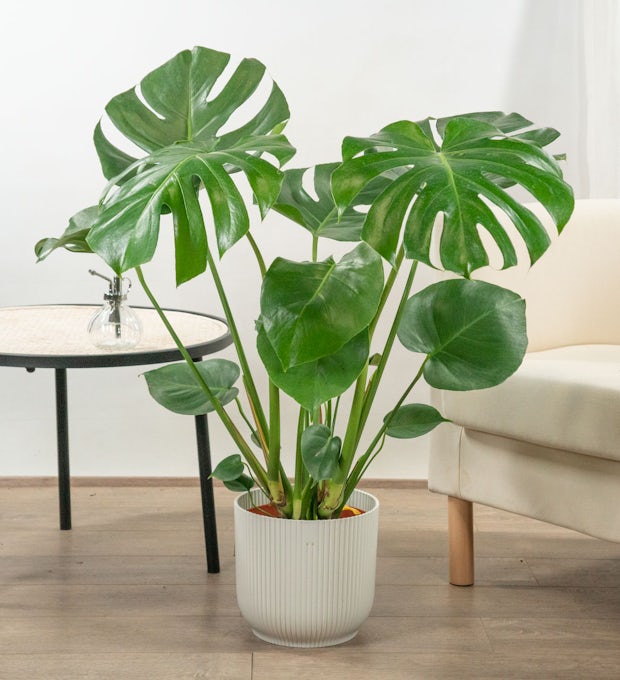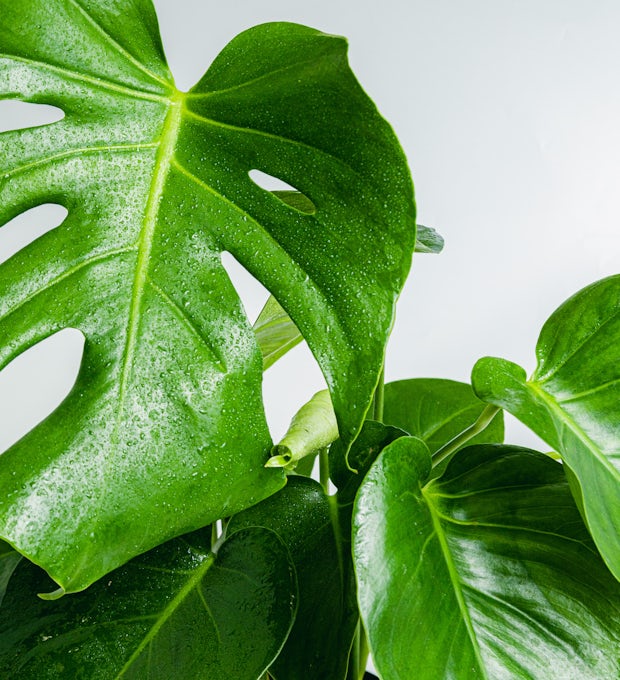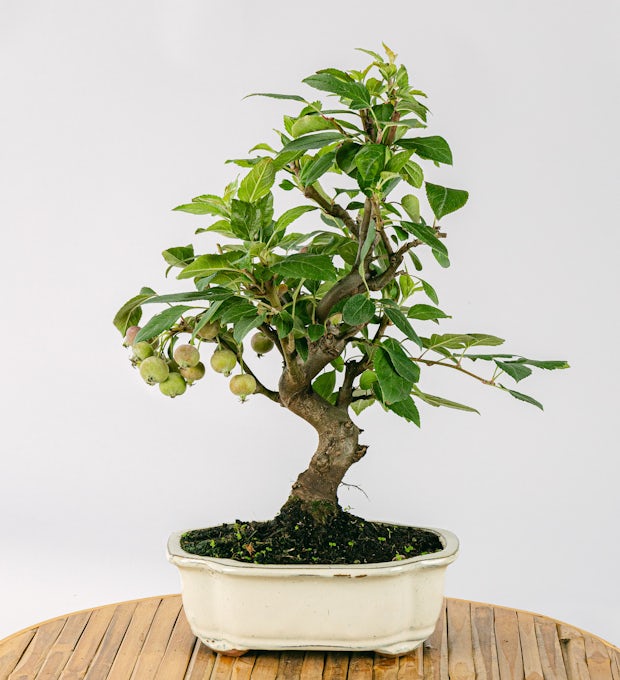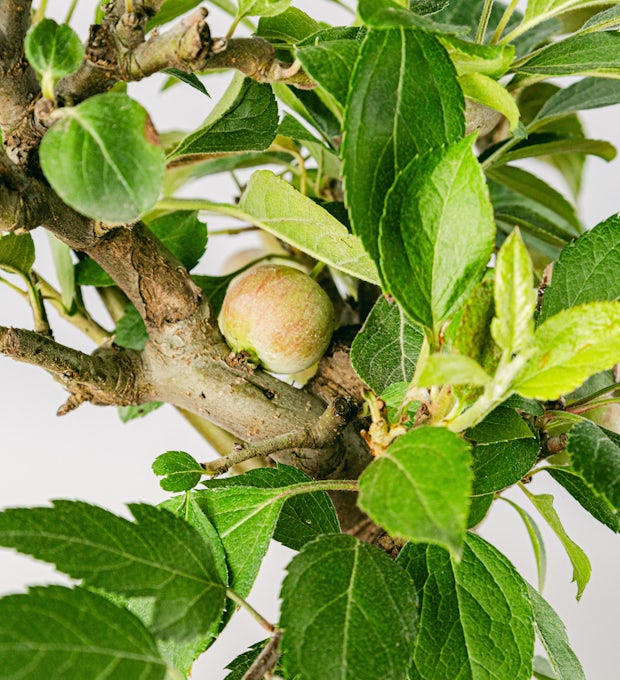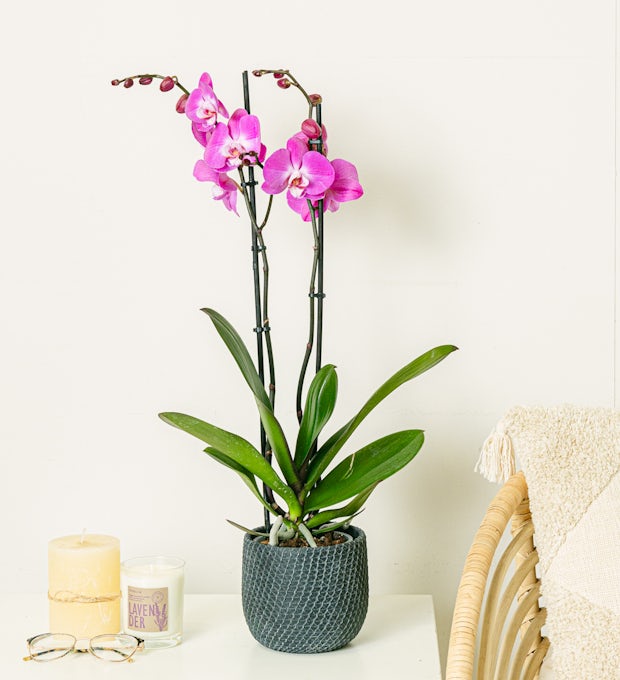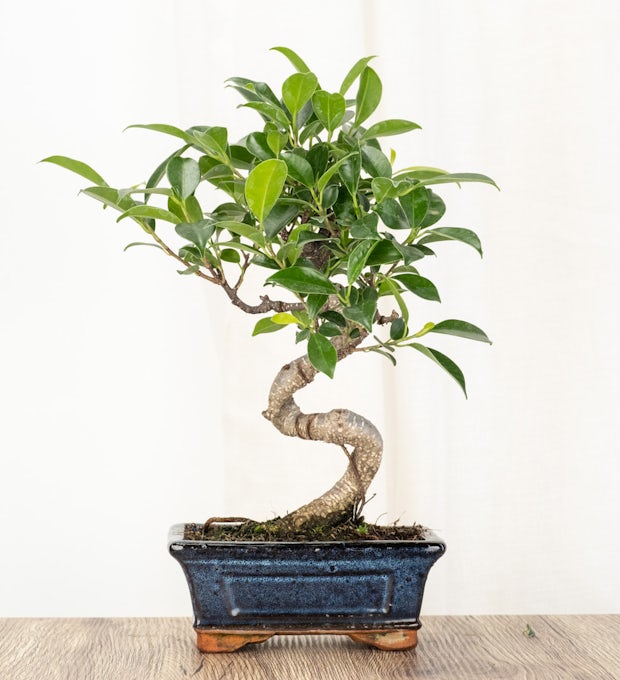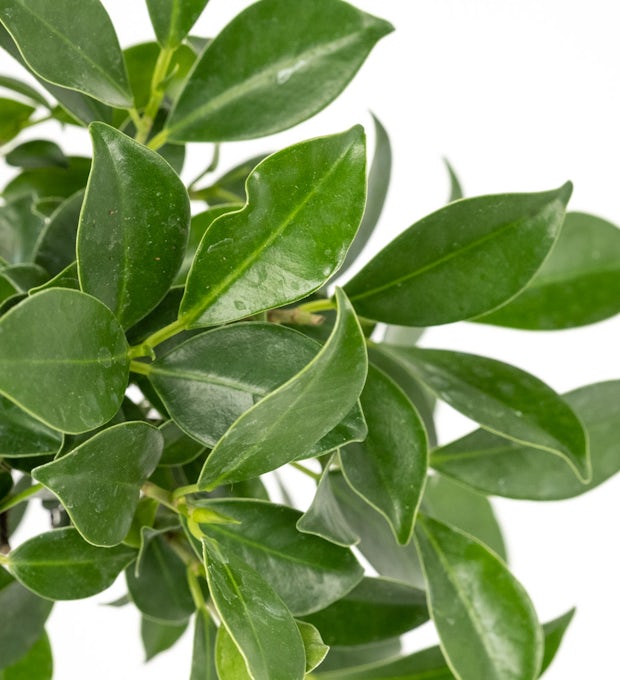There are incredible discoveries that are made purely by chance and something like this has happened to me with houseplants that grow in water without soil. One day I took a small cutting from my Potus plant in the hope of propagating it and left it in a glass jar with some water. Things happened and to be frank, I completely forgot about the poor cutting. When I deigned to pay attention to it, not only did it have roots but it had grown beautifully and radiantly.
Growing plants in water may be the answer for those who are unable to water their plants on time, but want to have beautiful tropical plants. It is also the ideal way to get into gardening, as it is low maintenance and produces very good results. That's why today we bring you the complete guide: the advantages of the method, care and the ideal species for you to start your water garden.
Advantages of growing plants in water
- Less care required
One of the most delicate points for plants is related to watering, in fact it is the reason why many plants die. Underwatering or overwatering is always a risk, so when you grow plants in water you forget about that detail. On the other hand, you don't have to worry about transplanting, substrates and other care that potted plants need to be cared for.
- Less clutter
As someone who has a few houseplants myself, I have to accept that things like watering days are a bit of a mess, because they always have to be moved and if I don't do it, I resign myself to having to clean up water residue with soil. Add to the equation some cats with a digger complex, and you can see that there is always dirt lying around. With plants that grow in water you completely forget about the substrate.
- Trendy decorative options
You can use virtually any glass container or other material to create your crops, which gives you unlimited decorative options. You can start by recycling glass jars that you think look cool for a rustic touch, or even get your hands on some test tubes and a wooden stand. Vases, jars, glasses, whatever you can think of to match your style.
- Fewer pests
By not having substrate, your plants become less attractive to pests that like to lay their eggs in the soil. No flies, ants, fungus and other bugs that can bother your plants. No soil, no problems.
- Easy reproduction
Putting a cutting in water is one of the quickest and easiest ways to propagate houseplants. So it will be easy for you to have small cuttings with roots, whether you want to put them in a garden, pot them, arrange them, give them as gifts or always leave them in water.
How to grow plants in water
- Select a plant species that you want to grow in water. Check the list provided below.
- Cut a cutting from the mother plant. Remember to cut it diagonally, with a sharp, clean pair of pruning shears, because if it is torn it can rot. Cut just below a node.
- The cutting can be 10-20 cm long and should have at least 5 nodes (the points where the leaves sprout) and a few leaves.
- If necessary, remove the leaves from the base and place in a container with water. Do not cover them completely, just a few centimetres from the lower end.
- I prefer to use rainwater, fitrated or mineral water, but you can use tap water as long as you let it stand for 24 hours for the chlorine to evaporate. Never use distilled or boiled water.
- Place your seedling in a well-lit area where it receives indirect light. Be careful to avoid placing it where it is exposed to draughts, heat from the cooker or radiator or air conditioning. Next to a closed window they are perfect.
- Remember that it may take a few weeks or even months before you see the first roots, depending on the species. Be patient.
- Check your plant containers from time to time and top up with water if they have evaporated. Change the water in your plants if it is too cloudy or dirty.
- Change the container if you see that the roots and the plant have grown too much.
- You can add a couple of drops of liquid fertiliser for indoor plants to your plant's water once a month to stimulate growth.
- You can exchange cuttings with your plant-loving friends, so you can expand your collection and share with those you love.
Houseplants that grow in water
Before you start experimenting with any type of plant and risk losing your cutting, it's best to play it safe. While it's true that almost any cutting can take root when submerged in water, not all plants will survive in the long term. In fact, you can root succulents in water, even using leaflets, but you can never leave them in water indefinitely, because they will rot from excess moisture. Here is a fairly exhaustive list of the most popular species, but as a general rule you should know that this growing method does not work for orchids, cacti, succulents and other plants that hate excess humidity, but it is perfect for tropical plants in humid climates.
Coleus
Scientific name: Plectrantus scutellarioides
Coleus are a superb addition to any houseplant collection, bringing lots of colour with their small, serrated leaves. They like indirect light, so you can put them in a place where they don't get direct sun and use them as decorative pieces on tables, for example. You can collect their different varieties and combinations.
Tradescantia
Scientific name: Tradescantia - pallida, fluminensis or zebrina
Tradescantia is popularly called "man's love" because it is so easy to grow. In fact, they grow as herbs in warm climates and can be a bit invasive. They still look gorgeous: you can get purple varieties, with beautiful pink flowers, but there are also variegated species that have shades of green and pale pink. They will grow happily and radiantly in glass containers and as they have a bit of a droop, they will look great.
Lucky bamboo
Scientific name: Dracaena sanderiana
did you know that the lucky bamboo is not a bamboo, but a type of dracaena? Hardy, elegant, as well as purifying the environment, it is said to attract prosperity. Lucky bamboo grows best in a glass container filled with gravel and water, because this gives it stability. This allows you to make some stylistic choices, playing with the colour, shape and material of the pebbles. You can find them braided, in different shapes and sizes. They are so easy to care for that they are another popular choice when it comes to houseplants growing in water.
We ship plants to all locations, you can see more options here.
Croton
Scientific name: Codiaeum variegatum
It's impossible not to love crotons, their bright, vibrantly coloured leaves ranging from yellow to reds and purples. There are many varieties and all are capable of growing in water. In fact, putting its cuttings in water is a simple and quick way to reproduce it. The only catch is that if you want it to keep growing beyond a certain point, you must plant it in soil.
Potos
Scientific name: Epipremnum aureum
Potos are the most popular of the indoor plants that grow in water. These green warriors not only help to purify the environment, they are practically indestructible. They are very pretty, with their heart-shaped, green leaves that cascade down like a waterfall, so they will look great on shelves and high areas. Place them in a bowl, glass jar or vase that allows their roots to expand. I like containers that are a little tall, as this helps to emphasise their poise.
We ship plants to all locations, you can see more options here.
Philodendron
Scientific name: Philodendron hederaceum
Known as heart-leaved philodendrons, this is such a hardy tropical plant that it is jokingly said to be harder to kill than to care for. You'll fall in love with the shiny heart-shaped leaves, which droop on long, lush stems. To prevent it from getting too lanky, you can trim the branches from time to time and put them in water so that they take root and give you a fuller plant. They like warm temperatures and adapt to almost any light conditions.
Spider plant
Scientific name: Chlorophytum comosum
This species can be found in variegated and green varieties, they are very beautiful and have a very nice low habit. Easy to look after, they are distinguished by the fact that they are very easy to reproduce, as they push out their offspring using a long stem; this is why they are also known as mala madre (bad mother). Float that baby in a container of water and it will soon take root. They like direct sun and if you can, change the water every 8 to 10 days.
Begonias
Scientific name: Begonia
Everyone knows begonias, because they are summer's favourite flowers, although there are also varieties with beautiful leaves such as begonia maculata, which are preferred for growing in water. They can survive for several months, although like crotons, if you want them to develop and reach maturity, you will need to transplant them into soil at some point.
Moulting cane
Scientific name: Dieffenbachia
Their variegated leaves with white dots make them popular, but they are not only beautiful but very easy to care for and will grow as well in water as in soil. For your cutting to be successful, remember to cut one that is at least 20 centimetres long, hopefully with some leaves. It should be in a bright spot but not in direct sunlight. You can use some gravel for stability.
English Ivy
Scientific name: Hedera helix
These climbing plants with their distinctive little leaves are vines that are used in gardens to cover fences and walls, or to cover the ground like a carpet. When grown indoors, they tend to grow in cascades, creating a beautiful effect because they are so bushy. Easy to care for, you can grow them in water using cuttings of about 15 centimetres in a tall glass vase or container. Prefer green and tender cuttings as woody cuttings are more difficult and slower to root.
Ficus elastica
Scientific name: Ficus elastica
Ficus elastica are usually plants that can grow a couple of metres, even planted indoors, but if you grow it in water it will grow a little slower. Use a cutting of about 20 centimetres or more and remove all the leaves from the middle downwards. They require a lot of light to grow beautifully, but never allow them to get direct sun. They take a little while to root, about 3 months, but it is worth it to see them with their amazing growth habit and shiny leaves. You can use a little gravel to give stability to the cutting.
We ship plants to all locations, you can see more options here.
Singonium or arrowhead plant
Scientific name: Sygonium podophyllum
This is another plant of tropical origin that will delight you with its colours and the shape of its leaves. Very easy to care for, you just need to put a good cutting in fresh water. Try to change it every two weeks, to keep the level of oxygen and nutrients high to stimulate its growth. It prefers indirect and abundant light. You will see that it roots quickly and will grow happily in water.
Dracena
Scientific name: Dracaena
Dracaenas are one of my favourite plants because they are incredible warriors, easy to look after and they also have a beautiful and elegant appearance. If you are going to grow them in water, I recommend you to use long containers and you can put some gravel at the bottom to keep them upright. Prefer rainwater or filtered water, as it is somewhat sensitive to the chlorine in tap water. To keep it in optimal condition, change the water once a week and do not allow it to become cloudy.
We ship plants to all locations, you can see more options here.
